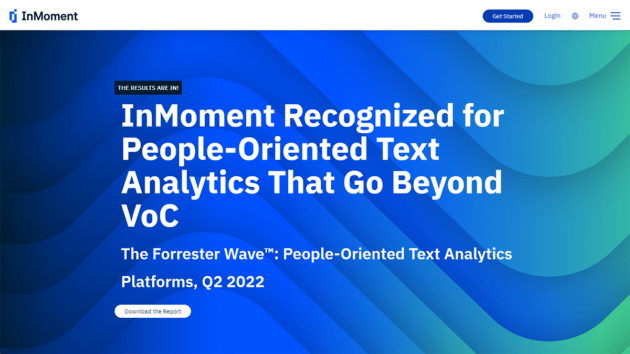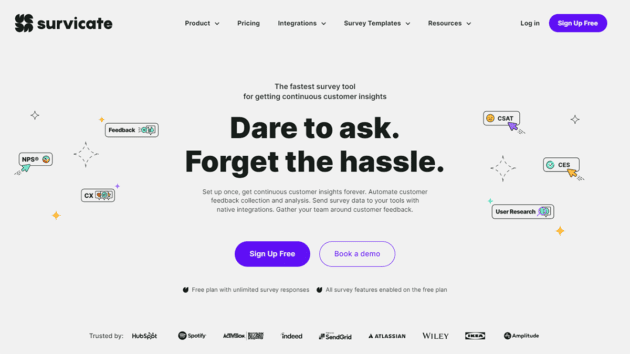In today’s business world, the customer’s experience is more important than ever before. To ensure that your customers are happy and satisfied, you need to be proactive in managing the Net Promoter Score (NPS) – a metric that measures customer satisfaction and loyalty.
NPS is calculated by asking customers: How likely is it that you would recommend our company, product, or service to a friend or colleague? The survey respondents have to choose an answer from 0 to 10.
This question is scored on a scale of 0 to 10 points, with 10 being extremely likely and 0 being not at all likely.
Customers can be divided into three categories: Promoters, Passives, and Detractors.
- Promoters are loyal enthusiasts who will keep buying and referring others, fueling growth. Their score is usually 9 or 10.
- Detractors are clients that are unhappy – people who can damage your brand. Their score is between 0 to 6. As a brand, you wouldn’t want your growth to be impeded through negative word-of-mouth.
- Passives are the people who aren’t super enthusiastic. Their recommendation cannot be relied on, but if you improve the quality and service of your business, they can be turned into Promoters. Their scores are either 7 or 8.
To manage and grow your business, you need to turn your Detractors into Promoters. A high NPS score indicates growth potential while a low NPS score indicates that your business is at risk of losing customers.

Before diving into tools, first, let’s understand the Net Promoter Score better:
1. It’s a leading indicator of growth
The NPS metric was developed by Bain & Company as a way to measure a company’s ability to grow. Since then, it has been adopted by companies all over the world as a way to gauge customer satisfaction and loyalty. NPS has been shown to be a strong predictor of growth, making it an essential metric for any business that is looking to grow its customer base.
A low NPS means there’s room for improvement in one or more of your business processes.
Assuming you’re in the eCommerce space, a slow order fulfillment rate could be the reason behind your low NPS. In this case, using a software solution that can automate and optimize your fulfillment process could help you turn more customers into promoters.
Recommended for you: Holiday Email Marketing: How to Win Maximum Customers During the Peak Season? (Infographic).
2. It improves customer experience
A key reason why you should manage your customer’s NPS is that you can then take measures to ensure customers are satisfied. A low NPS means you should focus more on customer service. Use videos to improve your customer experience. Using video testimonials and personalized video content, show your customers that you’re paying attention to what they’re saying.

Videos better target the pain points of customers. A well-thought video can address issues better in a way that is more relatable to people.
By proactively working towards improving customer service, you can help reduce churn and keep more customers loyal to your brand.
3. It increases word-of-mouth marketing
Not only can managing your customer’s NPS help in improving your customer service, but it can also attract new ones. That’s because happy customers are more likely to spread the word about your brand through word-of-mouth marketing. “Word of mouth” is a very effective way of marketing (or vice versa, if your brand is generating negative reviews).
Top Tools to Manage NPS

Now that we know the metrics involved in calculating NPS, let’s discuss some of the best software solutions for managing your customer’s NPS.
1. Qualtrics
Qualtrics is a powerful survey tool that can help you gather feedback from your customers. It offers a variety of features, including the ability to send follow-up emails and track results over time. Qualtrics is a great option if you’re looking for a comprehensive solution.
Some relevant features of the tool are as follows:
- Customer XM: The feature helps to increase customer lifetime value and reduce churn.
- Product XM: The feature has data that helps in improving product market fit and in shortening the time needed to market the product.
- Design XM: Helps in understanding the products, services, and experiences that are required by customers.
- Brand XM: This solution helps in understanding the way a brand is perceived by users. Data collected through it also assists in improving market share and in getting new customers.
- Real-time response monitoring: Get real-time insights from responses to act on them quickly.
- Data insight reports: Qualtrics’ detailed report feature allows you to understand sentiment analysis and customer segmentation.
In addition, Qualtrics provides end-to-end security to enterprises. It follows all major compliances such as ISO270001 and GDPR. Your data will remain safe from data breaches and as a result, this will save costs.
This was all about the features of Qualtrics. There are other top Qualtrics alternatives such as InMoment, Attest, and Survicate, having features additional to Qualtrics. Let’s deep dive to discuss their features.
You may like: AI Chatbots: How They Boost Customer Satisfaction, Conversions, and Profitability?
2. Attest
Attest, similar to Qualtrics, is a survey solution tool. With Attest, you get instant insights from your surveys making it easy to target specific groups of customers and compare results over time. Its NPS surveys and brand tracking makes it easy to track customers’ sentiments.
Some of the ways Attest stand out are as follows:
- Usability: It has an intuitive interface and a seamless sign-up process so that you get started in no time.
- Support: The customer research team provides support on projects and helps in getting optimal output through the platform.
- Pricing: Its pricing is dependent on credits. You will be charged according to the number of answers you want. This way you only pay for what you use.
Attest has different options for creating surveys that will help in managing the NPS. Some of them are:
- Qualifying questions: This option ensures that only respondents who select the qualifying answers are shown the next set of questions.
- Question routing: Questions are routed according to the respondent’s answers. In other words, there are different paths to a particular survey.
- Display logic: Users have the flexibility of showing questions based on the answers that have been selected previously.
- Draft sharing: The survey draft can be shared with colleagues for an additional check before the survey is rolled out.
- Translations: Sending out surveys to international audiences is fairly simple with the translation option inside the platform.
3. InMoment
InMoment, formerly known as Wootric, is a customer experience management software that helps you track, understand, and improve metrics that help increase customer satisfaction.
Some relevant features of the tool are as follows:
- InMoment offers a simple, customizable interface that makes it easy to get started.
- It allows you to gather customer feedback using CX metric surveys.
- Its Experience Improvement aims to provide optimal value according to customers, employees, and business needs.
- CX Cloud is used for handling customer data so that your business decisions are based on the complete availability of data.
- EX is data concerning employees. It helps in creating a workplace culture that provides a growth platform to employees.
- MX helps focus on data that helps companies remain competitive in the market. Keeping up to date with emerging trends in the market helps in measuring the success of campaigns.
- InMoment integrates with a variety of other tools such as Salesforce, Zendesk, and Mixpanel.
4. Survicate
Survicate is a simple, yet effective, tool for gathering feedback from your customers. It offers a variety of features, including the ability to send follow-up emails and track results over time.
It has different touchpoints to measure customer experience. The touchpoints include:
- Product surveys.
- Feedback hub.
- Website surveys.
- Email and link surveys.
- Intercom messenger surveys.
- Mobile app surveys.
Your action items and next steps are dependent on the feedback you receive from customers.
This way you improve customer satisfaction, increase conversions, and ultimately grow your business.
You may also like: 7 Best Tools to Build a Positive Customer Relationship.
How important is managing customer service and the NPS?

NPS is essential for any business looking to grow its customer base and increase its word-of-mouth marketing. By proactively managing your customer’s NPS, you can improve customer retention, reduce churn, and attract new customers.
A decent NPS is a sign that a company is delivering on the promises made to its customers.
Use NPS data to plan ahead. For instance, create ads or content that promotes your product to those who are likely to need or want it. If you’re a B2B company, use NPS data to identify upsell opportunities for current customers who are promoters.
On the other hand, for detractors, focus on customer service. Improve the quality of your support, and make sure that each interaction is positive and helpful. Customer retention requires delivering proactive customer service. Make the shopping experience more relevant by personalizing content and offering products that complement their previous purchases.
Monitoring the NPS closely can help you understand if your customer is likely to recommend your products/services to other customers. If the NPS is low, work towards increasing customers’ loyalty. Remember to put customers at the heart of all your business decisions and they will reward you with their loyalty.
This article is written by Osama Zahid. Osama is a technology content strategist who is passionate about content marketing and all things SEO. He has helped various companies rank their content on the first page of search engines. In his free time, Osama loves to play football and travel.




 This article is written by Osama Zahid. Osama is a technology content strategist who is passionate about content marketing and all things SEO. He has helped various companies rank their content on the first page of search engines. In his free time, Osama loves to play football and travel.
This article is written by Osama Zahid. Osama is a technology content strategist who is passionate about content marketing and all things SEO. He has helped various companies rank their content on the first page of search engines. In his free time, Osama loves to play football and travel.




